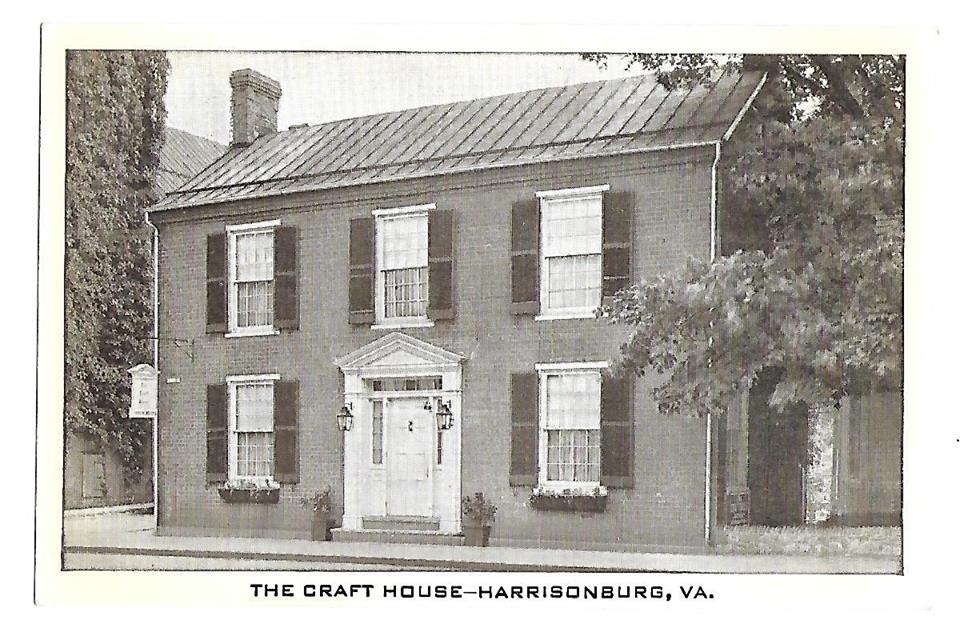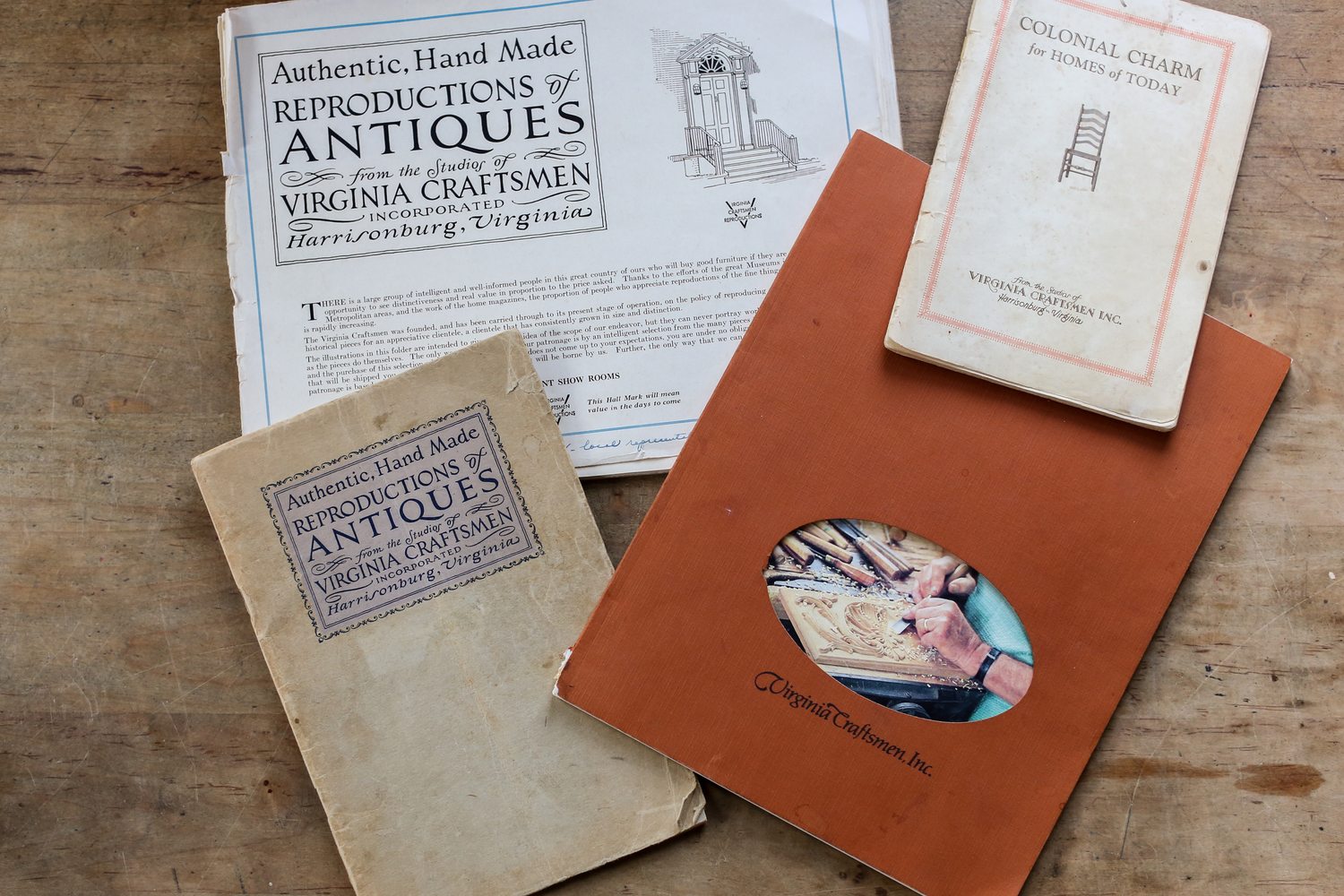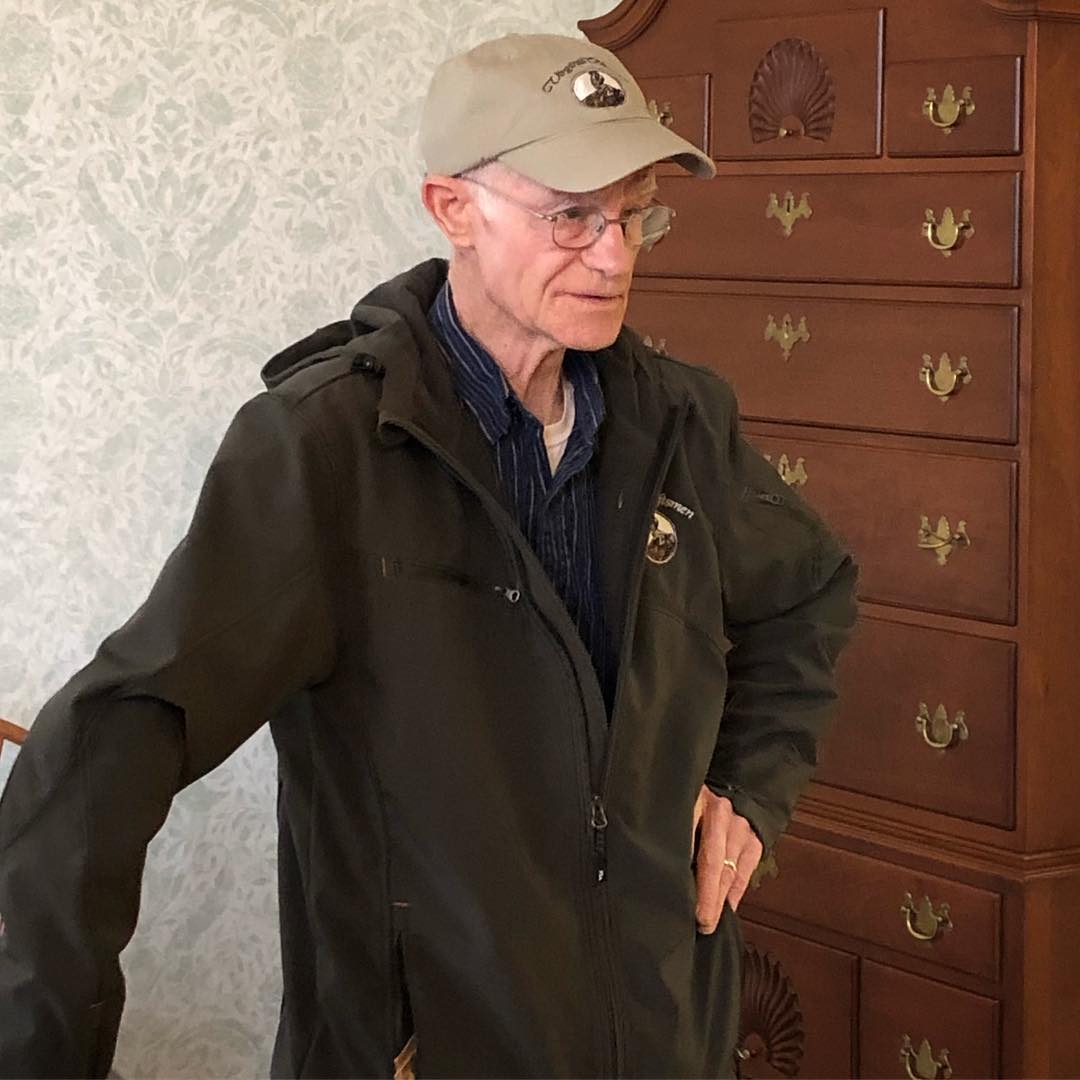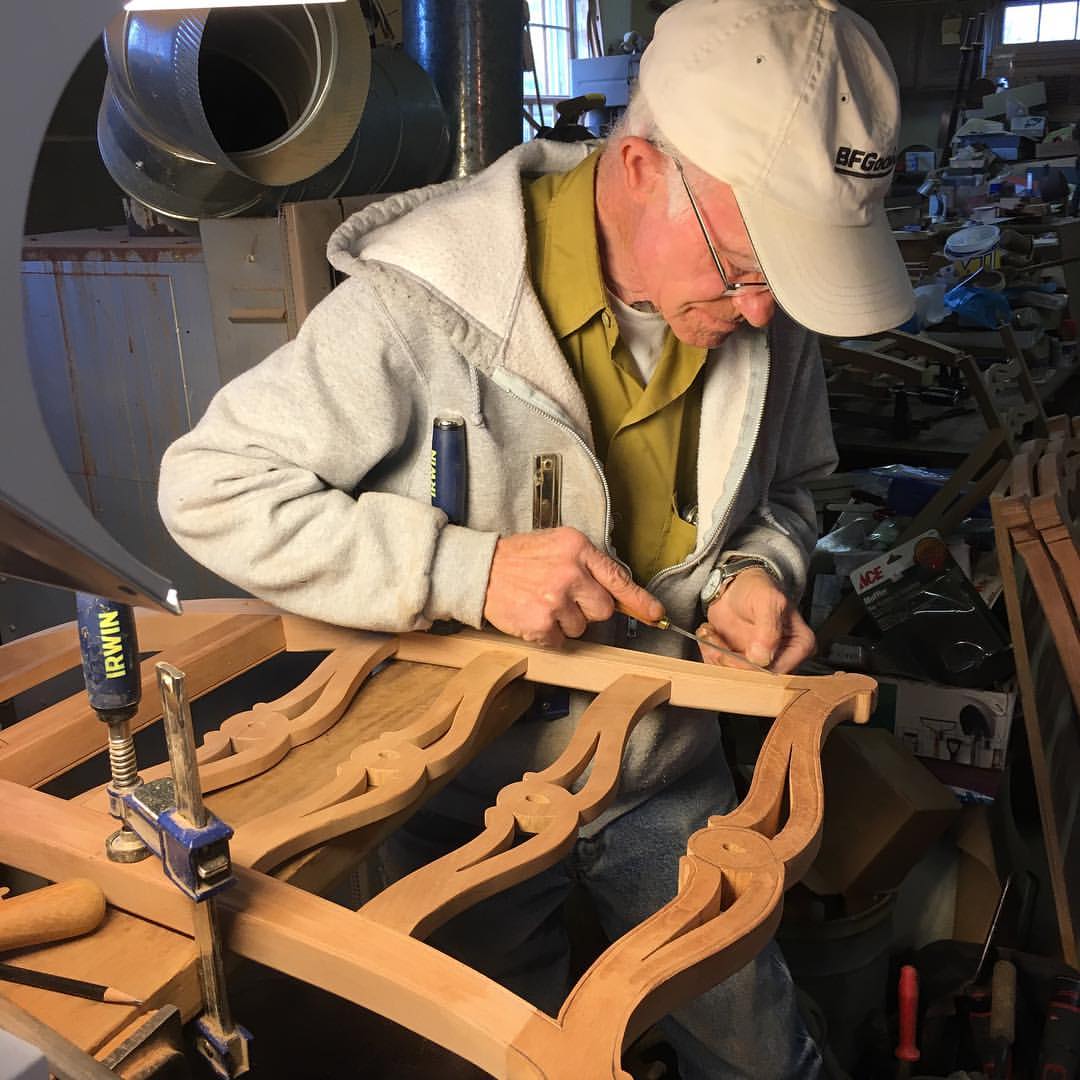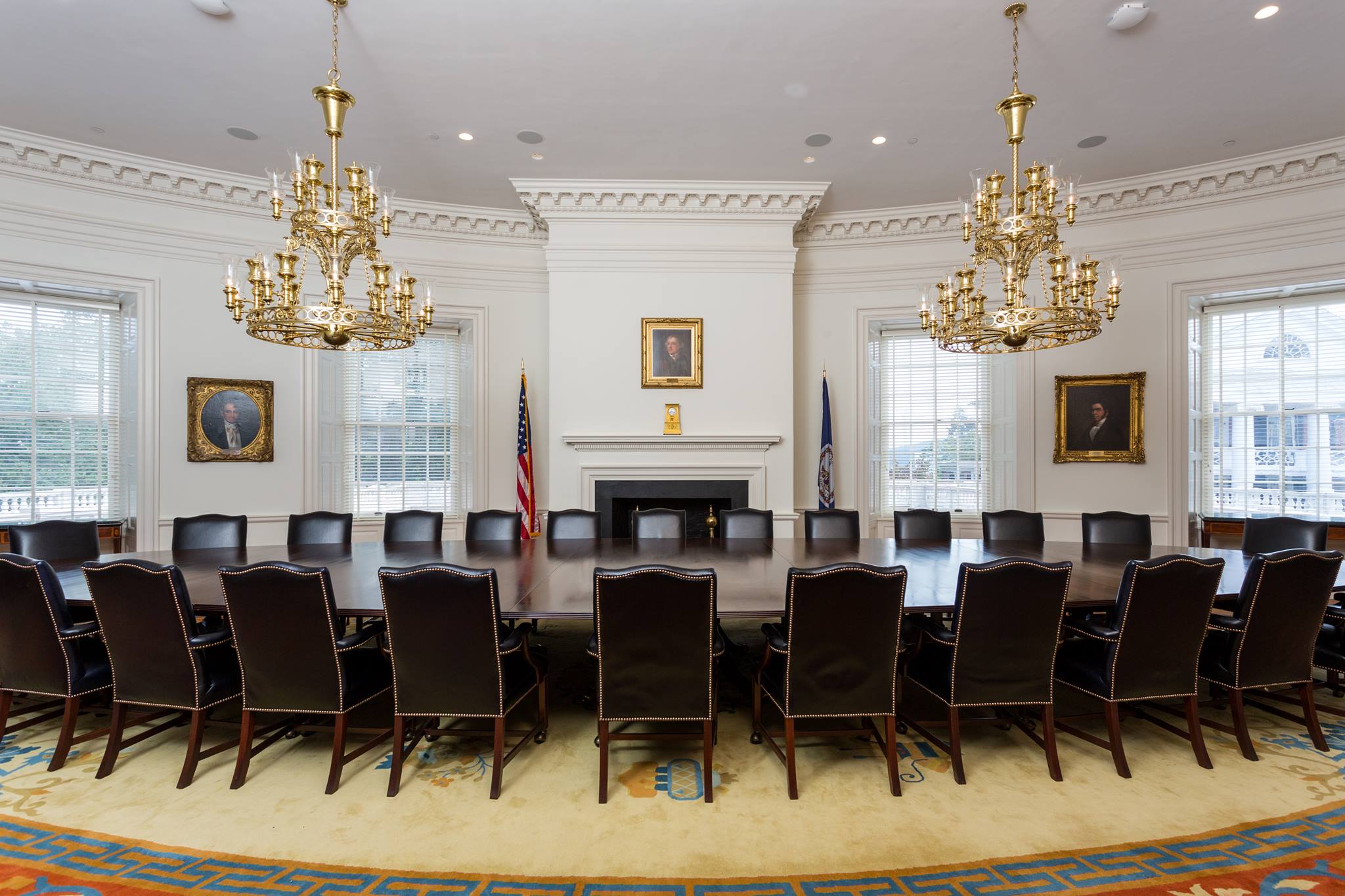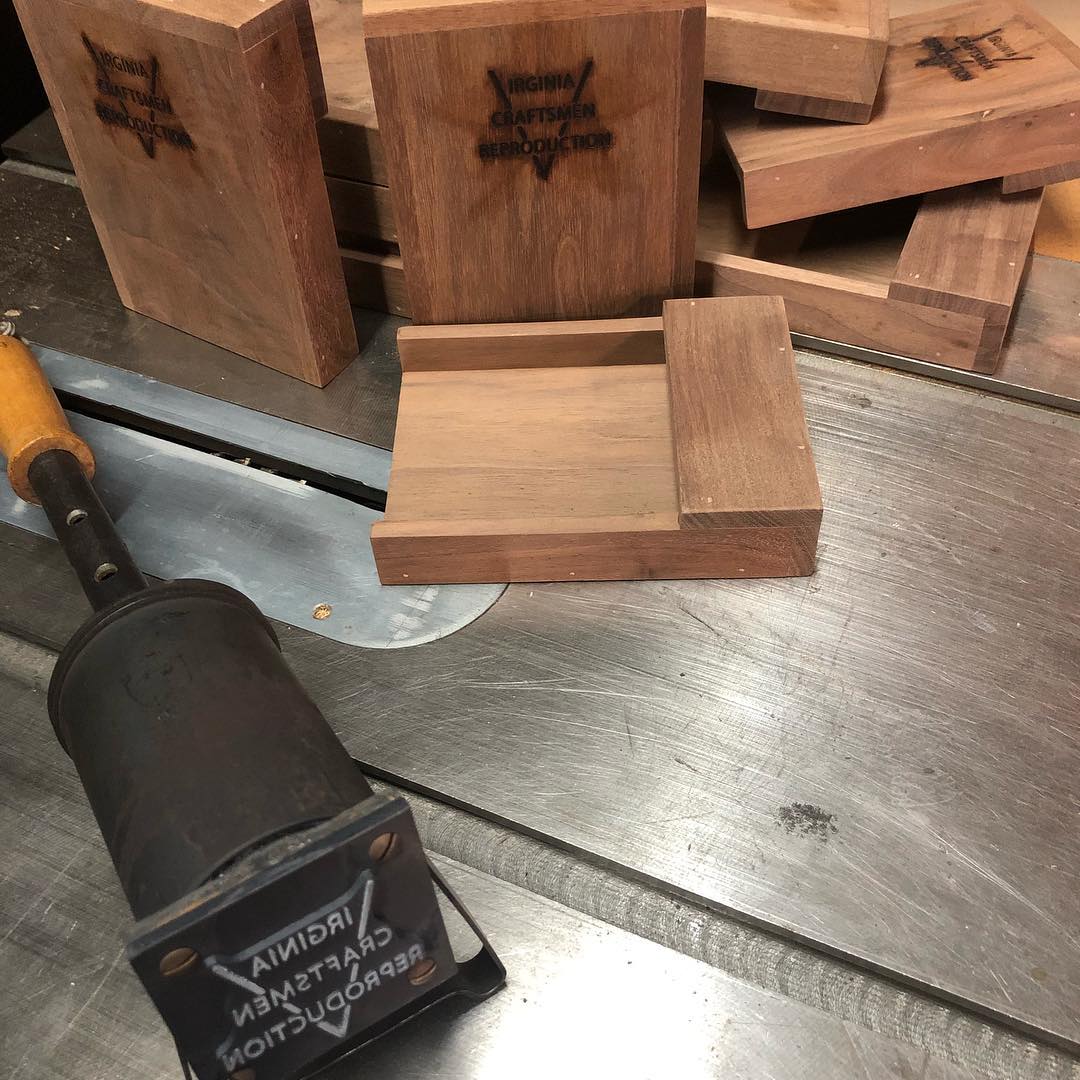The Hardesty-Higgins House has been repurposed and remodeled many times since 1848, when Mr. Hardesty, the city’s first mayor, moved his family into one of the finest homes in Harrisonburg. Later, the Pollack family expanded the four-over-four room plan and ran an inn, and in 1931, a new company in town, Virginia Craftsmen, again remodeled the building to serve as a showroom where they could display their reproductions of fine antique furniture. Local architects created the drawings and patterns from actual historical pieces, and for almost sixty years the rooms of the house were filled with beautifully hand-crafted furniture, meticulously constructed by local craftsmen from those drawings and patterns.
In 1988 Virginia Craftsmen moved out of the house, and the rest, as they say is history: after remaining vacant for almost two decades, the city reclaimed Mr. Hardesty’s house as the Visitor’s Center, bringing the house into the 21st century, while honoring its historic roots.
On the first of March, the First Friday of the month, we circle back in history to once again welcome Virginia Craftsmen back to 212 South Main Street. Roy Swartz, along with his son Ryan and his wife Ashley, have brought several unique pieces of their furniture to display in the Zirkle library, along with photographs, period catalogs, and other artifacts that help illustrate the history of this local and historic company.
Walter Zirkle, Sr., founded the company in 1927, right before the Great Depression began, and the story of how this small-town company not only survived the ensuing hard times, but prospered, is a captivating slice of Harrisonburg’s history, and one that adds to our understanding of the kinds of folks who contributed to the making of our town. Roy Swartz has spent his entire working life with Virginia Craftsmen. He recalls his first days there in the fall of 1963, shortly before John F. Kennedy was assassinated, when, fresh out of high school, he began his career by sanding and carving in the shop, then located on South High Street, where Virginia Craftsmen produced their furniture.
Roy was shop manager in 1988, when the doors of “The Craft House” on South Main Street closed for the last time. Fortunately, he was able to acquire the priceless plans and patterns the company used, and although could not afford to buy the entire business, Roy continued to craft fine furniture near his home in Hinton, Virginia. Finally, in 2008, Ryan and Ashley purchased the federal trademark for the original name, and Virginia Craftsmen was officially in business once again. Although recently retired, Roy plays a crucial role in the life of the business. “He supports us with ambition and his extensive woodworking knowledge, and he spends as much time in the shop as I do,” Ryan explains.
From its beginnings, Virginia Craftsmen has been dedicated to the historical preservation of furniture styles of Colonial days, to the “Perpetuation of Colonial Charm” as one of their booklets from 1928 is entitled. Their careful attention to exact measurements and styles, as well as their finely-honed woodworking skills, resulted in orders from such luminaries as J.D. Rockefeller, who was beginning his restoration of Williamsburg.
The company also gained exclusive rights to reproduce furniture from Monticello, which was also in the first stages of its renovation.
On October 4, 1929, a few weeks before the historic Wall Street Crash and the beginning of the Depression, Harrisonburg’s Daily News-Record reported that the Virginia State Chamber of Commerce called the city’s main street “the busiest in Virginia.” And although the Great Depression undoubtedly brought hardship to countless citizens of Harrisonburg, on December 20, 1929, the newspaper ran a story with the headline “Craftsmen bring $500,000 to City,” and quotes the general manager of Virginia Craftsman that despite the collapse of the stock market, “Demands for its reproductions of historical Virginia antiques, well made, has grown by leaps and bounds.” Plans for expansion of the company were already underway.
The reporter also noted that “No industry has been started in Harrisonburg so distinctly local.” Amazingly, although the company relied on the near-by region for its labor, most of its materials, and all of its capital, the company had recently received large orders from Macy’s department store in New York, and was also exporting its high-quality furniture to “every state in the Union,” as well as to Hawaii and Canada. In today’s terms, this was a “locally-sourced” furniture company!
In February of 1931, the front page of the Daily News-Record carried reports from Admiral Byrd in the South Pole, news from Berlin about pre-World-War II politics, as well as the headline that Virginia Craftsmen had received a huge contract to make reproductions for “Wakefield,” the house that was being rebuilt on the site of the home place where George Washington was born in Westmoreland County, Virginia. Since the house and its contents had been destroyed by fire, it was necessary to do elaborate and time-consuming research for accurate styles, and “drawings of early English furniture were obtained from the Victoria and Albert Museum in London and from various private collections in England and America.” Virginia Craftsmen had already sent between seventy-five to 100 pieces to Wakefield, with more on order.
Today, Virginia Craftsmen furniture can be seen at an impressive number of historic locations and restorations, including The Rotunda at the University of Virginia, the Wren Building at the College of William and Mary, and Pierson College at Yale University, among many others. The largest piece of furniture in Virginia Craftsmen history is a table built for the Board of Trustees at Bridgewater College in 1985. It took sixteen workers a total of five hundred and twenty man hours; composed of Honduran Mahogany, it was built in six sections, measures thirty-two feet by ten feet, and weighs 1,700 pounds.
In the 1970s the company had built a similar table for use in the Rotunda at the University of Virginia, although it was slightly shorter. In 2015, when UVA restored the Rotunda, they called on the Swartz family to refinish the piece, in order to ensure that the table received the painstaking care with which it had been crafted.
Ryan Swartz describes the business model of Virginia Craftsmen, from its earliest days, as that of a guild of talented craftsmen who worked together to produce fine furniture, under the leadership of Walter Zirkle, whose skills as a salesman and a visionary brought the orders back home to Harrisonburg whenever funds were low. Zirkle always employed highly skilled draftsmen to make sure the furniture was made to exact specifications. At times a priceless antique would be held in a bank vault at night, brought out during the day so that it could be accurately measured and drawings made, and then returned each evening to the vault for safe-keeping.
The Swartz family has, in its keeping, over 4,000 irreplaceable original drawings and plans, timesheets, and almost all of the original orders in triplicate for all the work accomplished in the 90 plus years since the Virginia Craftsmen began. Even more remarkable is the fact that these artifacts survived several fires and even water damage by floods. These drawings have archival value in and of themselves, in addition to telling the story of this historic company, and their preservation is one of the family’s goals.
Talking with the Swartz family, and perusing some of the material they have collected through the years, their enthusiasm for their company is palpable. Their dream is to one day assemble another group of craftsmen, who, in a new century, can work in collaboration, possibly on new projects. Meanwhile, Roy Swartz works happily beside Ryan in his workshop, remembering the old days while looking to the future, where furniture is still carefully made, without plastic or plywood, the pieces still joined with perfect dovetails and mortise and tenon. Ryan takes a moment to reflect on the rich history of Virginia Craftsmen: “Tradition, heritage, and family memories” he spells out, “that’s what we’re all about.”
And we are proud and excited to have Virginia Craftsmen “come home” to the Hardesty- Higgins House!
Written by Guest Blogger, Carol Mishler. Carol is a Travel Specialist for Harrisonburg Tourism.
